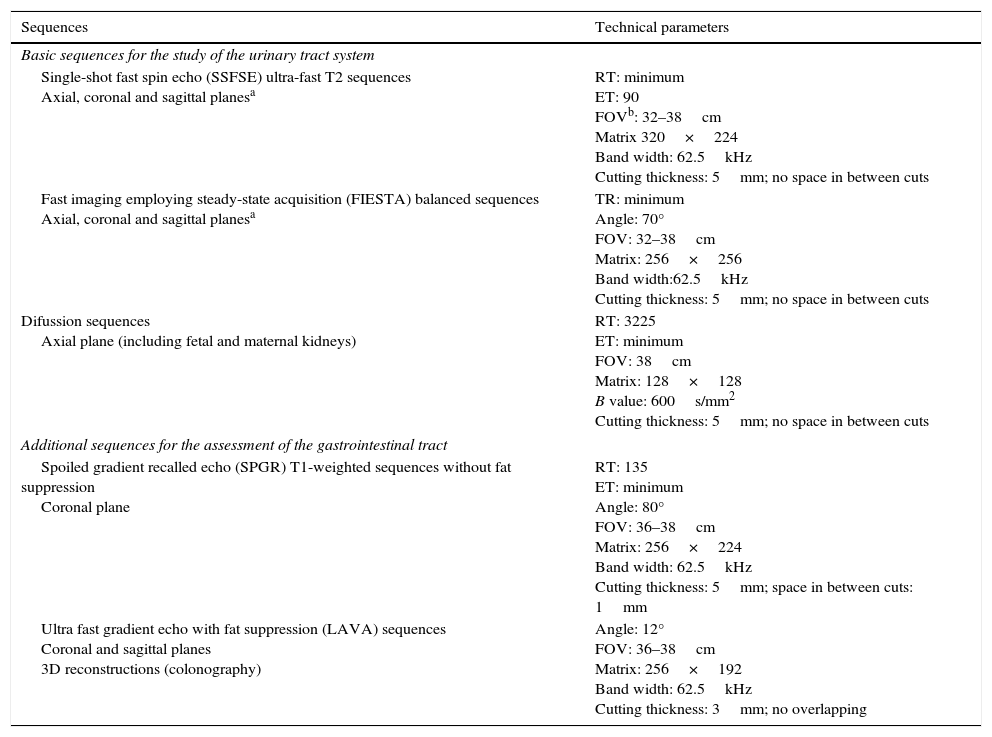Urinary system birth defects represent the abnormality most often detected in prenatal studies, accounting for 30–50% of all structural anomalies present at birth. The most common disorders are urinary tract dilation, developmental variants, cystic kidney diseases, kidney tumors, and bladder defects. These anomalies can present in isolation or in association with various syndromes. They are normally evaluated with sonography, and the use of magnetic resonance imaging (MRI) is considered only in inconclusive cases. In this article, we show the potential of fetal MRI as a technique to complement sonography in the study of fetal urinary system anomalies. We show the additional information that MRI can provide in each entity, especially in the evaluation of kidney function through diffusion-weighted sequences.
La patología urinaria es la anomalía que se detecta con mayor frecuencia en el estudio prenatal y representa del 30 al 50% del total de las anomalías estructurales en el nacimiento. Los trastornos más frecuentes son la dilatación del tracto urinario, las variantes del desarrollo, las enfermedades quísticas renales, la patología neoplásica renal y anomalías de la vejiga. Estas entidades pueden presentarse aisladas o asociadas a síndromes. Su evaluación se realiza con ecografía de forma rutinaria, y solo en aquellos casos en los que no sea concluyente se considera el estudio adicional con resonancia magnética (RM) fetal. Nuestro objetivo es exponer el potencial de la RM fetal como complemento a la ecografía en las enfermedades del sistema urinario fetal, analizando sus principales indicaciones y la información adicional que aporta en cada entidad, especialmente en la valoración de la funcionalidad renal mediante las secuencias de difusión.















